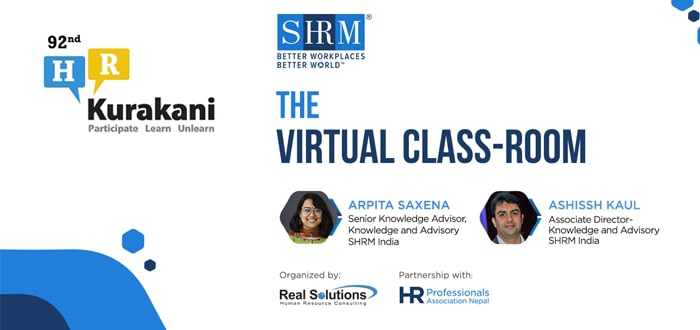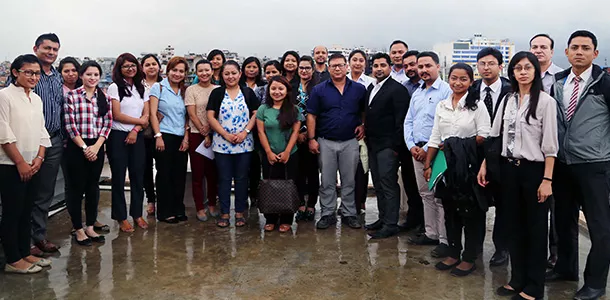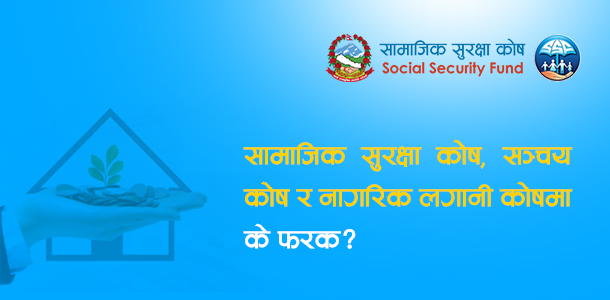
'The Virtual Class-Room' Effortless Virtual Facilitation.
Category: HR Kurakani | Date: June 24, 2020, 2:25 p.m. | Total Views: 1655
HR Kurakani, an open platform for learning and sharing organized for the past 8 years by Real Solutions successfully completed its 92nd editions focused on the topic, “ The Virtual Class-Room' Effortless Virtual Facilitation on June 19th, 2020. The Virtual HR Kurakani was jointly organized by Real Solutions and HR Professionals Association Nepal (HRPAN) in collaboration with Society For Human Resource Management (SHRM) and was attended by 30+ HR Professionals from various organizations in Nepal.
The Kurakani was moderated by Ms. Bishal Dahal, HRPAN, and was facilitated by Ms. Arpita Saxena, Senior Knowledge Advisory, Knowledge and Advisory SHRM India, and Mr. Ashissh Kaul, Associate Director- Knowledge and Advisory SHRM. As the Coronavirus outbreak grows, the world we used to know has changed drastically and is driving a transformational change.
Even in this uncertain environment, we must continue to learn even if that cannot happen in person. "3 months back. None of us had thought that we will be on lockdown into our homes and we will have to work from home and learn from home in this virtual consultation" said Mr. Kaul. There are certain specifics and rules that we need to do to ensure that virtual learning gives an impactful experience and there is where the effortless virtual facilitation research content from SHRM came into practice, he added.
How do you create a learner experience? How do you simulate the learner experience in a virtual platform? What are the comparative features of Virtual Facilitation and how do you include them? What are the design principles that should get into the creation of Virtual Facilitation? These are some important questions worth pondering upon before getting started with your Virtual Facilitation experience.
What is virtual Facilitation?
Virtual facilitation is a modern approach to organizational development that combines traditional live workshops with real-time virtual communication and virtual collaboration. As a facilitator, a Virtual Facilitator allows you to bring a large group of people together to collaborate on complex learning programs and organizational development processes.
Learning and development are critical for corporate success. There are different ways to facilitate learning among the participants, even in a virtual classroom. It is crucial to develop a learning experience that fits each participant's Learning styles that encourages them to learn and absorb information in a way that is meaningful and relevant to them.
Learning Styles of Physiologist David Kolb
Knowing a person's learning style makes the learning process to be orientated according to the preferred method. Everyone responds to and needs the stimulus of all types of learning styles to one extent or another – it is all about using emphasis that fits best with the given situation and their learning style preferences.
The learning styles described by Kolb sets out four distinct learning styles, which are based on a four-stage learning cycle:
- The Converger (Do and Think): People with a converging learning style can solve problems and will use their learning to find solutions to practical issues. They prefer technical tasks and are less involved with people and social aspects.
- The Assimilator (Watch and Think): These people require a good clear explanation rather than a practical opportunity. They excel at understanding wide-ranging info and manage it in a clear logical format.
- The Accomodator (Do and Feel): These people use other people's analysis, and prefer to take a practical, experiential approach. They are captivated to new challenges and experiences, and to carrying out plans.
- The Diverger (Feel and Watch): These people can look at things from different perspectives. They ‘re sensitive and they prefer to watch rather than do, tending to collect information and use imagination to unravel problems.
Kolb's Learning Cycle:
Kolb's learning cycle represented by a four-stage learning cycle. the Stages are:
- Learning from Concrete Experience: a new experience of the situation is encountered, or a reinterpretation of existing experience.
- Learning from Reflective Observation: of the new experience of particular importance are any divergences between experience and understanding.
- Learning from Abstract Conceptualization: Reflection gives rise to a new idea or a modification of an existing abstract concept.
- Learning from Active Experimentation: the learner applies them to the world around them to see what results
The fun part of adopting this learning cycle is that you don't have to worry about if it starting from concrete experience and going to reflective observation or abstract conceptualization or active in experimentation. You can start anywhere the critically important fact is that you cover all of those. When you cover all of those, you will see that you will make sure that you are covering up people who are accommodators, who are diverters, who are assimilators, and converters. “If you're covered up over and you've touched all of them in your facilitation assure that you know, there was something for everybody to be take away from the session”, said Mr. Kaul.
How do you build interaction during virtual facilitation?
Classroom interaction has an important role in the teaching and learning process as it helps the teaching and learning process run smoothly and it can increase learners’ communicative. There are some easy things you can do when you are facilitating that can help to capture that emotional commitment to virtual facilitation:
- Jigsaw Task: It is a cooperative learning technique that organizes classroom activity in a way that it makes students dependent on each other to succeed. This teaching technique breaks classes into groups and breaks assignments into pieces and gives them a greater sense of individual responsibility that they have o their group's outcomes.
- Ranking Task: This learning technique gives the participants a situation or a description and a criterion for ranking the items concerning a certain situation. Afterward, the participants tell each other their rankings, discuss reasons for their choices, and try to agree on a joint ranking. This approach does not only build a lot of interaction but also builds in a consequence to negotiate
- Role Plays: It is a learning structure that allows students to explore realistic situations by interacting with peers in a managed way to develop experience and trial different strategies in a supported environment. This technique is an excellent tool for engaging and allowing them to interact with their peers as they try to complete the task assigned to them in their specific role.
- Stimulation: Stimulation is a little bit different from role play. In a role play, I assume a role and in simulations, I am who I am. These days there are virtual simulations available for different requisite knowledge online. I could be given a different example of a case study or as a situation which is a simulation and then say what would you do in this situation? So that's how you create a lot of these activities and interactions through stimulation.
“ Imagine when you do multiple contains and multiple people and then as a facilitator, you let them or you put them in an interactive system. What you do is you put them together so that everybody learns everything, so you as a facilitator don't have to talk teach them through everything but in those interactions, people are learning from each other. And this is the power of Cooperative Learning of the Cloud Learning process”, said Mr. Kaul.
Besides all these, some other essential elements are crucial for building interaction during virtual facilitation such as using the right tone, maintaining eye contact, smiling during the sessions, using the right environment that doesn't distract the learners, and be considerate.
How to select the right tool and technology for Virtual Facilitation?
With so many ways and tools available to connect virtually, finding the best combination for your virtual collaboration tools become tougher. Therefore, an effective to ensure that the chosen technology works for you, rather than against you is to make sure what are the elements that you want to take into consideration during your session and what elements of the chosen technology make it possible for you. Also trying to identify what platform could work better for your learners can be a guideline for choosing the right tool for the facilitation.
The whole session was conducted through an efficiently designed module combined with various interactive exercises that promoted learning and interacting among the participants. After remarks sharing form Mr. Bishal Dahal, the 92nd HR Kurakani officially ended with a vote of thanks. The knowledge, views, and experiences shared during the session were very insightful.
(HR Kurakani is a no-cost knowledge sharing event organized by Real Solutions to exchange ideas, opportunities, and challenges among HR Professionals and Enthusiasts.)



